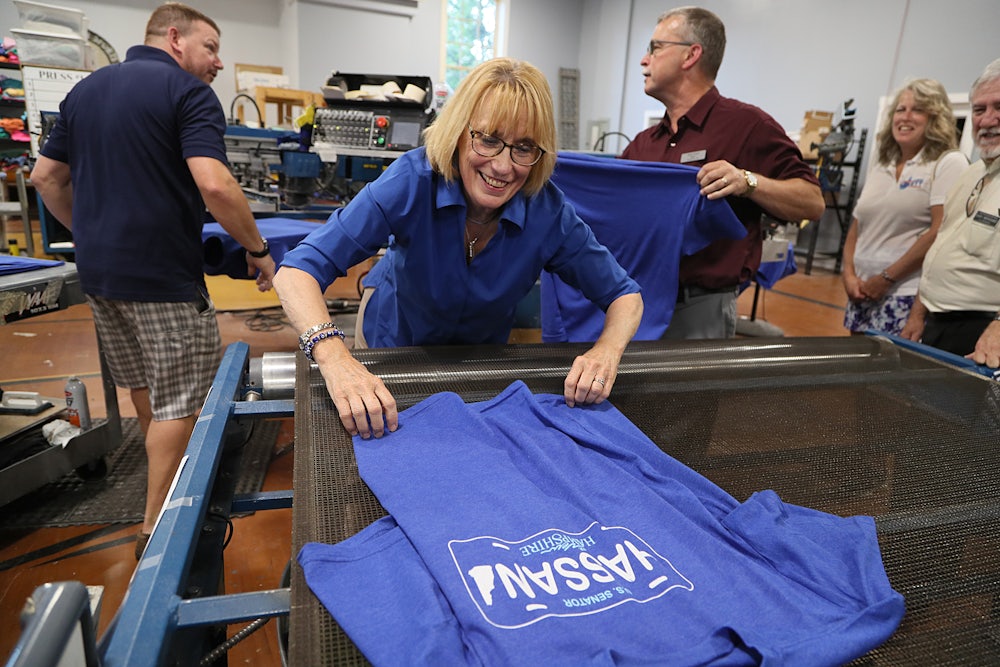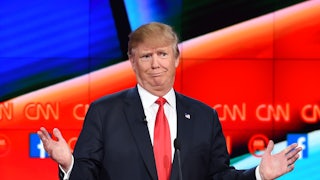Fifty years ago, President Richard Nixon signed legislation that has turned out to be a de facto super PAC tax. Starting Friday, and continuing until the election, political candidates are entitled to discounted TV ad rates while super PACs, dark money groups, and party fundraising organizations have to pay the often inflated market price for the same time slots.
The political implications of the half-forgotten law are significant in a year when the Democratic candidates are outraising their GOP counterparts. An analysis by Politico found that the number of online donors to Republicans dropped during the first half of 2022, an unexpected event at the beginning of a campaign year. Yet the super PAC tax limits the ability of conservative megadonors and groups like Mitch McConnell’s Senate Leadership Fund to rescue flailing candidates—like Blake Masters and J.D. Vance—this fall.
The motivation for the law, the Federal Election Campaign Act of 1971, will sound familiar. In the early 1970s, a time when two governors were named Rockefeller, politicians in both parties were panicked about being challenged for reelection by self-funding multimillionaires, so they passed strict limits on how much candidates could donate to their own campaigns. The Supreme Court struck down that provision in 1976 but left intact the TV ad discounts for candidates—a seemingly minor rule that took on major importance after the 2010 Citizens United ruling opened the floodgates for super PACs and the likes of Peter Thiel and the Koch brothers.
Calculating the size of the super PAC tax is daunting. The law requires broadcast TV stations to offer political candidates (whether they are running for the Senate or county coroner) the same preferred rates that major advertisers such as McDonald’s or Chevrolet receive through long-term contracts. But each TV station has dozens of different rates depending on such factors as the time slot and whether ads could be bumped if necessary.
In hotly contested media markets, a super PAC might have to pay double or even triple the discounted rates charged to a candidate during the 60 days before the election. This likely will be the case in swing states with both Senate and gubernatorial races on the ballot, such as the Atlanta, Phoenix, and Philadelphia media markets. Using crude arithmetic, $60 million in super PAC spending on broadcast TV ads might buy the same airtime as $30 million in campaign spending.
Party groups such as the National Republican Senatorial Committee also are not entitled to the candidate discount. This fact puts a different spin on the well-publicized squabble between McConnell and Rick Scott, the Florida senator who heads the NRSC. According to The New York Times, the NRSC blew though 95 percent of its $180 million bankroll in a failed effort to harvest new online donors. Not only has this shortfall forced the NRSC to cancel major ad buys, but Scott’s group also missed the chance to advertise heavily before the super PAC tax took effect.
Media coverage, with a few exceptions, tends to treat candidate and super PAC spending as virtually equivalent. A Fox News story last week reported that McConnell’s Senate Leadership Fund intends to spend $23 million in New Hampshire to defeat Democratic incumbent Maggie Hassan. Unmentioned was the pesky detail that Hassan, who qualifies for discounted rates, had $7.3 million in the bank.
Campaign reporters love to write about fundraising totals because the numbers are tangible while so much else in political coverage is not. But too often these totals are reported with a sense of wonder and little interpretation. (An estimated $10 billion will be spent on the 2022 campaigns. Wow. Senate races in Arizona, Georgia, Nevada, and Pennsylvania will cost more than $200 million each. Holy cow!) While every candidate needs to meet a fundraising threshold to be credible, at a certain point additional spending does not create additional votes. In 2020, Democratic Senate challengers easily outspent Mitch McConnell (Kentucky), Lindsey Graham (South Carolina), and Susan Collins (Maine), yet all three Republicans romped over their opponents in November.
So take the news about Democrats’ overall fundraising advantage with a grain of salt. Now that the super PAC tax has taken effect for 2022, what matters most is how much money candidates themselves have on hand—and the messages that propel their campaigns.






